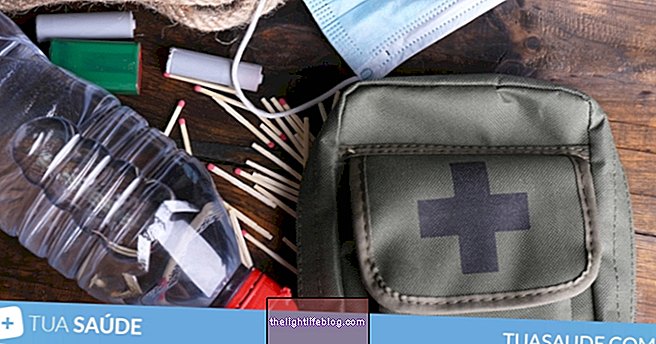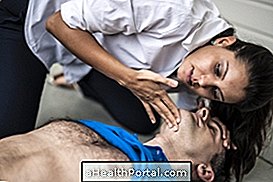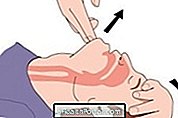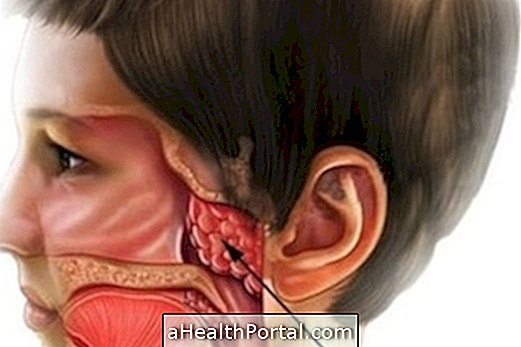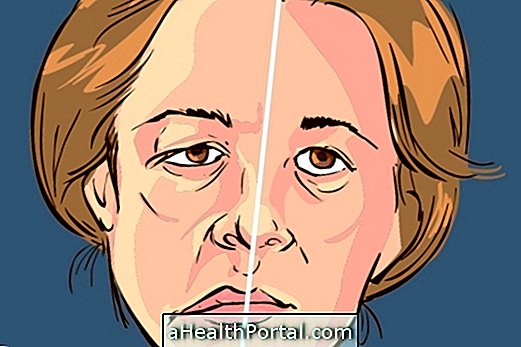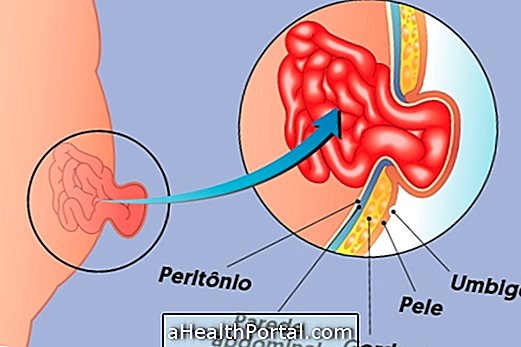If a fracture is suspected, which is when the bone starts causing pain, inability to move, swelling and sometimes deformity, it is very important to remain calm, to observe if there are other more serious injuries, such as bleeding, and to call the mobile emergency service (SAMU 192).
It is then possible to carry out first aid to the victim, which must follow the following steps:
- Keep the affected organ at rest, in a natural and comfortable position;
- Immobilize the joints above and below the lesion with the use of splints, as shown in the pictures. If there are no splints available, it is possible to improvise with pieces of cardboard, magazines or folded newspapers or pieces of wood, which must be padded with clean cloths and tied around the joint;
- Never try to straighten a fracture or put the bone in place;
- In case of an exposed fracture, the wound should be covered, preferably with sterile gauze or a clean cloth. If there is a very severe bleeding, it is necessary to compress above the fractured region to try to prevent the blood from flowing out. Learn more details of first aid in case of exposed fracture;
- Wait for medical assistance . If this is not possible, it is recommended to take the victim to the nearest emergency room.
The fracture occurs when the bone breaks down due to some greater impact than the bone can bear. With aging and with certain bone diseases, such as osteoporosis, the risk of fractures increases, and may arise even with minor movements or impacts, and greater care is needed to avoid accidents. Learn about the best treatments and exercises to strengthen bones and prevent fractures.
How to immobilize the affected limb
Immobilization of the fractured limb is very important to try to avoid fracture worsening and ensure that the tissues continue to be correctly perfused with blood. Thus, to make the immobilization is due to:
1. In closed fracture

The closed fracture is one in which the bone has broken, but the skin is closed, not allowing to observe the bone. In these cases, a splint should be placed on each side of the fracture and pass a bandage from the beginning to the end of the splints, as shown in the image. Ideally, splints should pass above and below joints near the site.
2. In the exposed fracture

In the exposed fracture the bone is exposed and, therefore, it is not necessary to cover the place with the ligature at the moment of immobilization, since besides being able to worsen the pain, it also favors the entrance of microorganisms into the wound.
In these cases, a splint should be passed behind the affected site and then, with a ligature, tie up and down the fracture, exposing it.
When you suspect a fracture
A fracture should be suspected whenever an impact on a limb occurs, accompanied by symptoms such as:
- Intense pain;
- Swelling or deformation;
- Formation of a purplish area;
- Sounds of crackling while moving or inability to move the limb;
- Shortening of the affected limb.
If the fracture is exposed, it is possible to visualize the bone out of the skin, and it is common to have intense bleeding. Learn to identify the main symptoms of fracture.
Confirmation of the fracture is made by the physician after the physical evaluation and x-ray of the affected person, and then the orthopedist can indicate the most recommended treatment, which involves bone repositioning, immobilization with splints and plasters or, in some cases cases, performing surgery.
